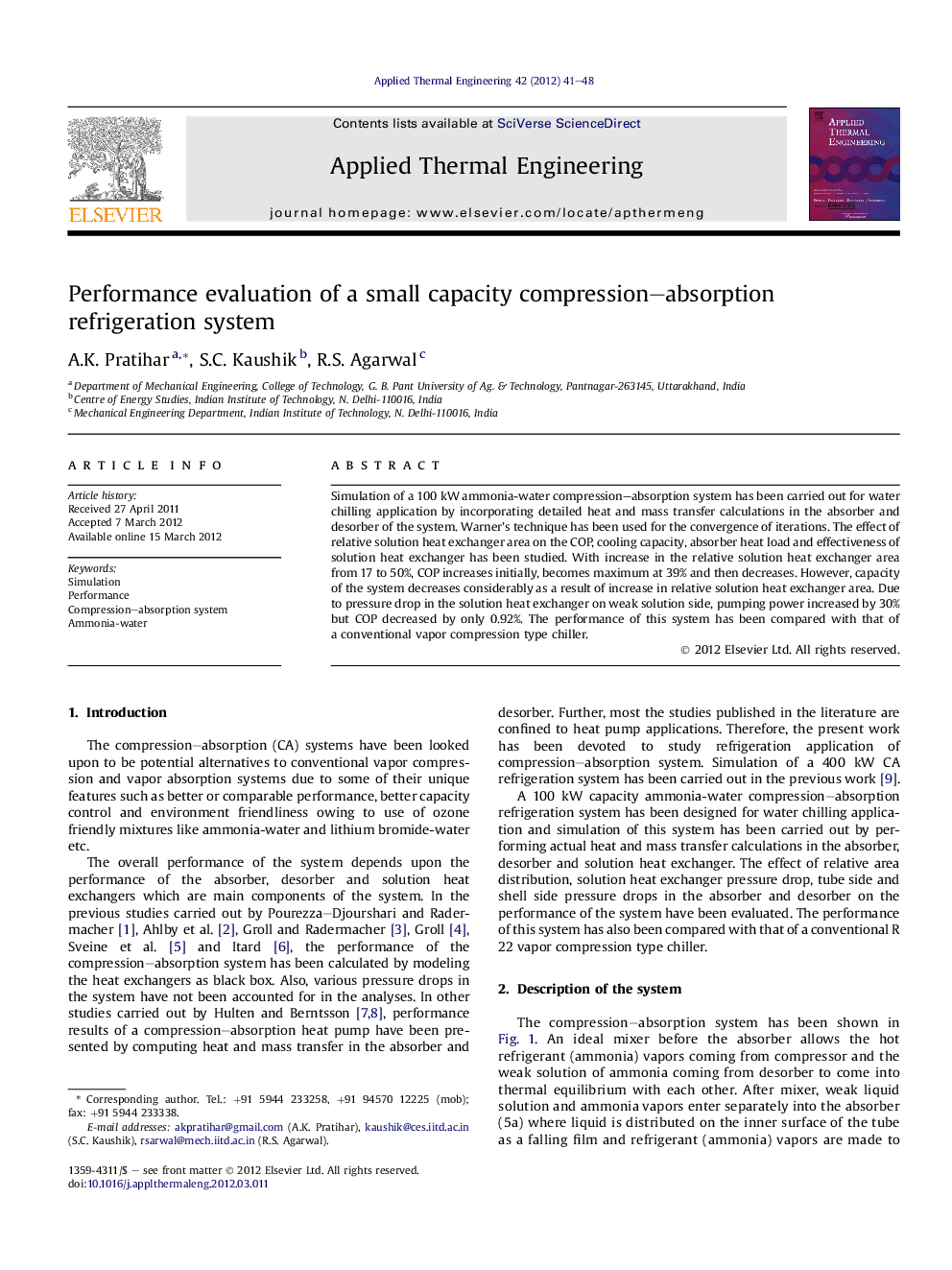| Article ID | Journal | Published Year | Pages | File Type |
|---|---|---|---|---|
| 647105 | Applied Thermal Engineering | 2012 | 8 Pages |
Simulation of a 100 kW ammonia-water compression–absorption system has been carried out for water chilling application by incorporating detailed heat and mass transfer calculations in the absorber and desorber of the system. Warner's technique has been used for the convergence of iterations. The effect of relative solution heat exchanger area on the COP, cooling capacity, absorber heat load and effectiveness of solution heat exchanger has been studied. With increase in the relative solution heat exchanger area from 17 to 50%, COP increases initially, becomes maximum at 39% and then decreases. However, capacity of the system decreases considerably as a result of increase in relative solution heat exchanger area. Due to pressure drop in the solution heat exchanger on weak solution side, pumping power increased by 30% but COP decreased by only 0.92%. The performance of this system has been compared with that of a conventional vapor compression type chiller.
► Simulation of a 100 kW ammonia-water compression–absorption system for cooling application. ► Actual heat and mass transfer calculations in the absorber and desorber. ► The effect of relative solution heat exchanger area and various pressure drops on the performance. ► An optimum SHX area exists at which COP of the system becomes maximum. ► Comparison of compression–absorption system with vapor compression system.
